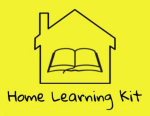Thematic units tie all your lessons together with a common theme to make homeschool more engaging and fun for your children. It allows students to make connections with real world knowledge and apply it to their lives in meaningful ways. Here, I will break down thematic units in detail plus give you some ideas to get started with them in your home.
What is a Thematic Unit?
A Thematic Unit is when you, as a teacher, gear all of your lessons towards a single topic of interest. This means your lessons in Reading, Math, Social Studies, Science, Art, etc. are all tied together with a common, real-world subject. When lessons are paired with a single topic of interest, it helps students engage more with them and make practical connections between their experiences and their learning.
What are the Benefits of a Thematic Unit?
There are a ton of benefits to using Thematic Units in your homeschool, including:
- Students can pick topics that interest them. (This means they’ll pay more attention and have more fun!)
- More engagement through hands on, fun learning.
- More frequent use of new vocabulary in its natural setting.
- Students can demonstrate understanding in a variety of ways.
- Builds on what they already know of the topic.
- Makes connections to the real world and not just what’s in a textbook.
How Long do Thematic Units Last?
One to Four Weeks
There is a lot of flexibility with the length of each Thematic Unit. Ideally, they should be no shorter than one week. There should be plenty of ways to tie your lessons together with your topic. They can also last as long as a month. Try to get a read on your child to determine how long they’ll stay interested in the topic. If they start losing interest sooner than you planned, you can always drop your unit temporarily and possibly resume it in the future if your child becomes interested in it again.
How Does a Thematic Unit Work?
Like I mentioned above, you want to tie all your lessons together around a specific topic. Here’s an example:
Your topic is Transportation
- Art – Make cars, trains, or planes out of crafting materials or food
- Music – Sing songs involving vehicles. Use ones that you know like ‘The Wheels on the Bus’ or make up your own.
- Reading – Read fun books or nonfiction stories about different types of transportation, how they are made, what people like, different styles, etc.
- Math – Make graphs of the number of vehicles you see daily, create word problems involving transportation (oh the infamous 2 trains questions!), or calculate the cost of gas for each vehicle to travel a certain distance.
- Science – What type of toy car goes the fastest down the ramp, across tile, across carpet etc. How can you make a paper airplane fly? Does paper type, fold, or weight matter?
- Social Studies – How were forms of transportation invented? How did the transportation change the world, i.e. the stage coach or railroads?
- PE – Play red light green light, stop sign bean bag toss, vehicle horn freeze tag, etc.
What Are Some Ideas for Thematic Units?
- Holidays (all or a specific one)
- Ocean
- Beach
- Bugs
- Astronauts
- Careers (all or a specific one)
- Gardening
- Nature
- Seasons
I also found this great website where they came up with 250 Thematic Unit ideas that you can take a look at.
Wrapping Up
Thematic Units are an excellent way to break up the doldrums of everyday education and really get your child into their lessons. They can be especially good if you’re taking a bit of a summer break but want to keep some topics fresh in your child’s mind. For example, if your family is taking a beach vacation, put some lessons together that relate to your trip.
If you liked this explainer, sign up for my newsletter using the button below. I regularly post helpful teaching concepts as well as learning games and other info to help make your homeschool a success. As a thank you for signing up, I’ll send you my free state-by-state homeschool guide!
Let me know how your lessons are going on social media. I’m always happy to help you brainstorm lesson ideas for your Thematic Units!

